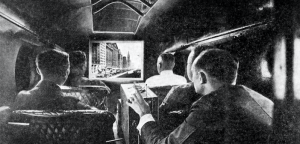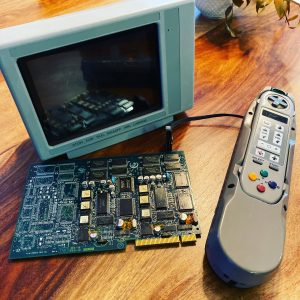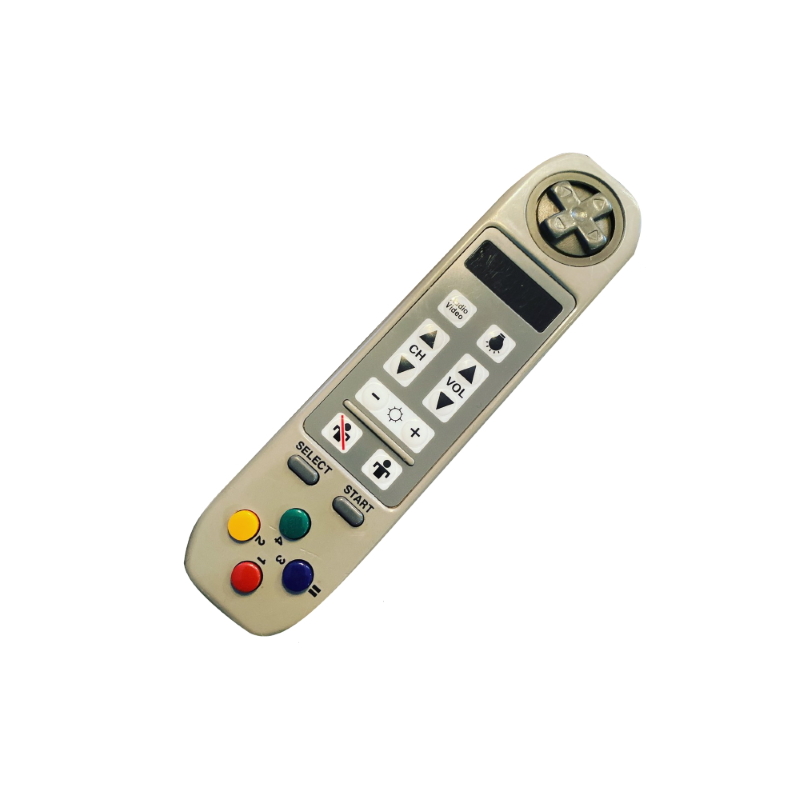|
History
The history of the Nintendo Gateway System can be traced back to as far as 1921 when occurs the first showing of a movie within a plane. Called Howdy Chicago!, it was a promotional movie  made for the Chicago’s Pageant of Progress trade show. It was seen by 11 attendees of the trade show on board an Aeromarine Airways Model 75 amphibian while it circled 2,000 feet above the Windy City in 1921. The world had to wait four more years to see the first in-flight Hollywood film, The Lost World, which aired in 1925 on an Imperial Airlines flight.
made for the Chicago’s Pageant of Progress trade show. It was seen by 11 attendees of the trade show on board an Aeromarine Airways Model 75 amphibian while it circled 2,000 feet above the Windy City in 1921. The world had to wait four more years to see the first in-flight Hollywood film, The Lost World, which aired in 1925 on an Imperial Airlines flight.
After that, the concept of in-flight entertainment system slowly stared to gain traction, to a point that in the beginning of 1992, Nintendo of America started to assess the possibility of implementing an on-demand Super Nintendo games services for planes and hotels. Dubbed the Nintendo Gateway System, the system was primarily designed to fit into planes as this was the most constraining service to implement. The logic was that, although not trivial, any services that would fit into a plane could be made to work into a hotel.
The work starting early in 1992 and latest 18 months. The main challenge was to make a device small enough to fit in the very limited spaces available in airplanes. The specs they were given were really restrictive: 3.5-inch x 3.5-inch 0.5 inches. Nintendo knew the system would be expensive and to entice airline company to acquire the systems, they had to make it as attractive as possible. With this in mind, Nintendo added multiple features such as pay per view Movie, audio CD recording and phone. This plethora of features added to the complexity and would need to be greed-lighted by the FAA before being authorized to be deployed on any aircraft.
The system was designed to accommodate up to three seats at the same time, by combining three Super Nintendo on the same card. Called the Triple Gateway System, these cards would either come in configurations of two or three Super Nes by cards. For rows with four seats, two devices would be used. To limit the space even further, all games would be stored on a shared hard drive and download by the Gateway system when requested. The game would be copied on the 2MB of memory of the device.
For the hotel version, things were a bit simpler. There was less constraint and, since clients in hotels are not listening to the entertainment system all at the same time, there was no need to install a complete system in each room. Instead, a receiver would be installed in which the controller would plug in. The system would then connect to a set of servers located in the hotel that would hold a predefined number of Gateway cards.
As Nintendo had no experience with creating planes or hotels entertainment systems (aside the FamicomBox and the Super Famicom Box which were more stand-alone console then entertainment systems), they partnered with Hughes-Avicom International for the plane interface and with LodgeNet Entertainement Corp. for the hotel systems.
Release
By July 1993, the system was finally ready to be deployed. Although a great opportunity, the cost of retrofitting an aircraft was very high. The cost added to around 4,000$ per seat, which, for a 747 was about 1.5 million dollars per plane. But the system was deemed attractive enough by airline company which quickly understood that the cost would be recouped very fast on international flights. Company such as Air Canada, Alitalia, ANA, BMI, China Airlines, Kuwait Airways, Malaysia Airlines, Northwest Airlines, Singapore Airlines, Thai Airways and Virgin Atlantic all opted to install the system on their plane. In then, Nintendo won their bet, and were able to make $10 million per year in royalties on this initiative.
Airline were also very happy. They were able to charge 4$/hour for games and 6$ for a movie. Movies could also be purchased in packages: 9$ for two movies or 12$ for three.
The LodgeNet Entertainement’s System 3000 was even more successful with almost 1,000,000 room being equipped with this system. The reason was quite simple: the system cost only around 50$ per room to install.
Demise
The gateway system stayed relevant for a while, but with the released of newer video game consoles and newer in-flight entertainment system, the appeal quickly faded away. Nintendo continues to support the gateway system for multiple generations for its LodgeNet system (N64 and GameCube), but these were never ported to the airplane system. The reason was simple. Airlines didn’t want to reinvest millions of dollars upgrading their systems, as you had to take the plane apart to install the various components. Hotel had way easier setup and could be upgraded quite easily which explains why Nintendo continue to support them for quite a while.
But with the advance in technology hotel entertainment became less and less profitable. By 2006, LodgeNet was already accumulating debt and the situation worsens with the arrival of streaming. The company survived a few years and declared bankruptcy by 2013.
The list of games, as well a very interesting article can be found here: https://snescentral.com/article.php?id=1019

